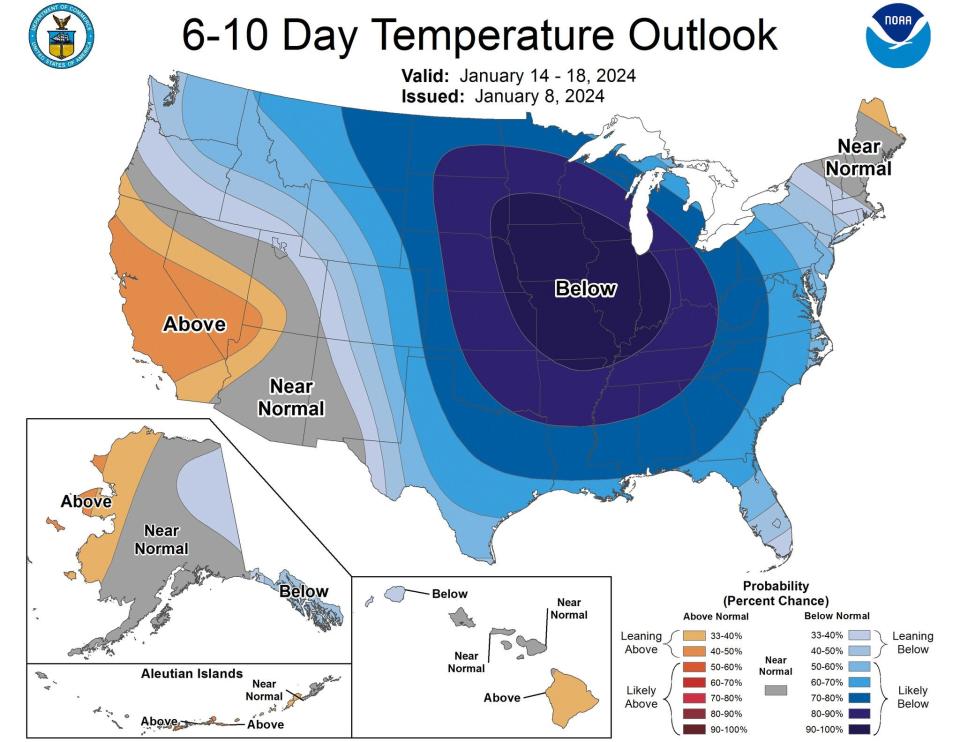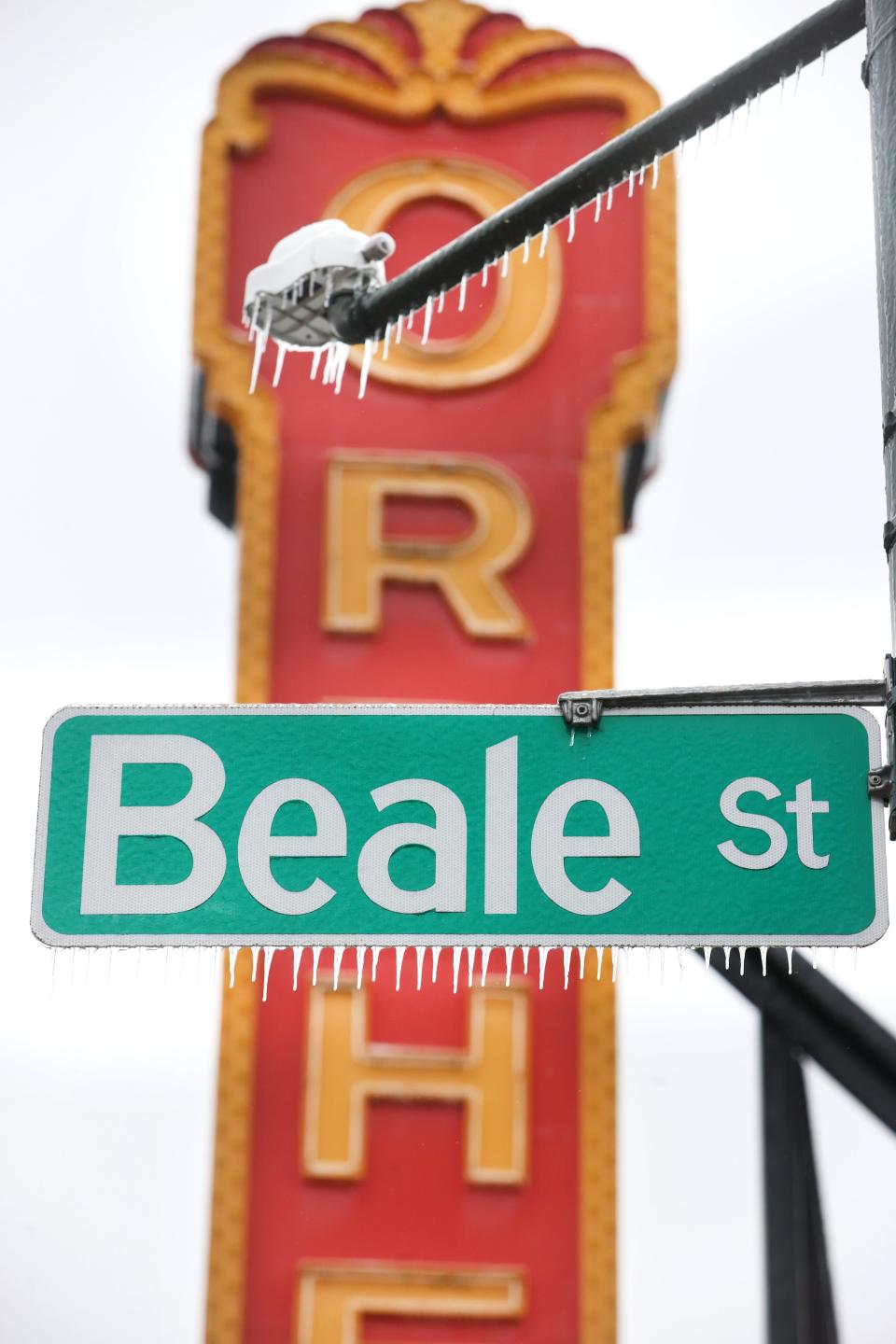With winter storms conditions expected in Tennessee, these are the weather terms you need to know
With a winter storm expected to bring cold and freezing temps across Tennessee next week, now is the time to refresh your memory of winter terminology so you can stay safe.
On Wednesday, the National Weather Service announced that the frigid air and freezing temperatures will be arriving early next week. Once the temperatures drop Sunday night, they will likely stay below freezing until sometime Wednesday said the NWS.
Per the National Weather Service and the Federal Emergency Management Agency, knowing these weather terms can mean the difference between a safe winter and a deadly one.
What is the difference between an advisory, a watch and a warning?
Meteorological authorities use advisories, watches and warnings to let people know the severity and potential impact of various weather events.
An advisory is issued for less severe weather conditions that can pose a moderate risk or cause an inconvenience. The weather conditions may not be as severe as a warning, but precautions should still be taken. Be informed and take measures to minimize risks. It is issued between 12 and 36 hours ahead of the event.
A watch indicates that weather conditions are favorable for a particular weather event. It means that the weather has not started yet, but the conditions are conducive for it to happen. Watches are typically issued 24 to 72 hours in advance.
A warning is issued when a severe weather event is occurring or is highly likely to occur. The warning means to take immediate action because the weather is imminent or already occurring. People should seek shelter and take any necessary precautions to ensure safety when a warning is issued. Warnings are issued when the chance of weather occurrence is greater than 80%.
What is a weather outlook?
A weather outlook provides information on winter weather with the potential to cause significant impact in the 3-7 day forecast. The ill weather could lead to the issuing of a watch or warning. Forecasts during this period have notable uncertainty, typically ranging in 30-50% likelihood that the event will occur.

What are the types of advisories for winter weather?
There are two primary advisories when it comes to winter weather − a winter weather advisory and a wind chill advisory.
A winter weather advisory is a type of public alert issued by meteorological authorities to inform the public about upcoming winter weather conditions that may be hazardous. The advisory is issued for conditions such as snow, freezing rain, sleet, or a combination of these elements. It is used to encourage preparedness for potentially challenging weather conditions.
Winter weather in Tennessee? Time to prep an emergency kit for your home, car and pets
A wind chill advisory is a public alert issued to warn people about the potential dangers of cold temperatures combined with wind. It is issued when wind chill values are expected to reach a level that may pose a risk to human health and safety, typically when the values reach -15 degrees or less. When under a wind chill advisory, it is best to limit skin exposure by wearing heavy layers such as coats, gloves, hats and masks.
What are the types of watches for winter weather?

Similar to the winter advisory, winter watches only have two types. There are winter storm watches and wind chill watches. Both watches are issued to alert the public of potentially hazardous conditions.
A winter storm watch gets issued when there is a possibility of significant weather conditions within the next 12 to 48 hours. These conditions can be heavy sleet, heavy snow, ice storms, freezing rain or a combination of these events. The watch is used to signal that the public should be prepared for winter conditions to potentially become hazardous.
A wind chill watch is issued when dangerously low wind chill values pose a risk. These low temperatures could lead to a heightened risk of frostbite and hypothermia. The watch is issued with an anticipation of low temperatures combined with strong winds. Outdoor exposure should be minimalized as much as possible.
How to prepare for freezing temperature: Tennessee to experience coldest air of winter yet
What are the types of warnings for winter weather?
There are four kinds of warnings for winter weather per the NWS. There are blizzard warnings, ice storm warnings, winter storm warnings and wind chill warnings. All warnings should be taken seriously as the weather is upon you and there is little time for preparation. During any winter weather warning, outdoor exposure should be reduced as much as possible.
A blizzard warning is issued when sustained or frequent winds of 35 mph or more and considerable falling or blowing snow reduce visibility to less than a quarter of a mile for three or more hours.
An ice storm warning is missed when ice accumulation from freezing rain is expected in significant amounts. Results from this weather can be downed trees and powerlines along with icy road conditions.
A winter storm warning indicates significant and potentially hazardous winter weather is imminent. The weather can be heavy snow, heavy sleet, ice storm or a combination of these. This warning requires immediate action.
A wind chill warning is issued when the combination of cold temperatures and strong winds creates life-threatening conditions. Wind chill temperatures may reach -25 degrees or less. The low temperatures can result in rapid heat loss from exposed skin which increases the risk of frostbite and hypothermia.
This article originally appeared on Memphis Commercial Appeal: Winter storm conditions in Tennessee? Weather terms you need to know

